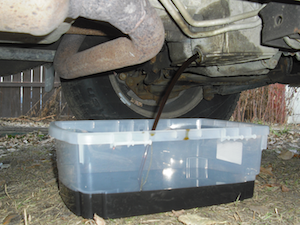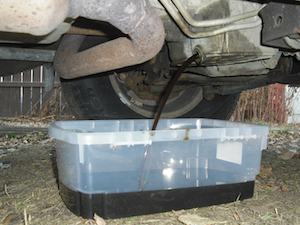 Chances are you’ll hit the road more in the summer months. From overheating to tyre bursts and wear and tear, a vehicle is prone to a considerable amount of damage this time of year. A simple car check can prevent casualties.
Chances are you’ll hit the road more in the summer months. From overheating to tyre bursts and wear and tear, a vehicle is prone to a considerable amount of damage this time of year. A simple car check can prevent casualties.
Follow these simple tips to protect your car and prevent roadside waits for AAA.
In general, whatever the season, look at the owner’s manual in your car and follow the schedule for maintenance at the suggested intervals; this is mostly based on your odometer mileage. To be really efficient, you should keep a little spiral notebook in your glove compartment and write what you did to your car and the date you did it.
Tires
So that your tires wear normally it is recommended that you have your tires rotated at least every 7,500 miles or so. Measure tire tread with a penny; when the top of Lincoln’s head is showing – replace your tires. And if they are cracked or bubbling or showing wires – get new ones. Approximately every six weeks, and especially before a trip, check your tire pressure. Always check tire pressure when the tires are cold, tire pressure increases with temperature.
Check your driver’s manual for your car for the exact amount of pressure it suggests for your make and model of vehicle. It’s probably on a sticker on a door jam, too. The average pressure for most cars is 28 to 35 pounds of air pressure. It may vary from front to back tires. It’s important you know them. At the air pump, go to the rear tire and unscrew the valve that is located on the rim of your tire. Use a pressure gauge (about $2 from at any auto parts store) to see how much air is currently in your tire. If your tire is over inflated, use the open end of the pressure gauge to release as much air as needed. A measure stick will push out of the end of the gauge showing you what the pressure is. If you need to add air, use the air hose and push it down over the valve until you hear the air going in. (Air escaping makes a hissing noise; air going in sounds like a balloon being blown up.) Replace the valve covers.
Air conditioner
If it doesn’t blow cool you’ll need to get it serviced (checked for leaks and possibly have the refrigerant recharged). It is a good idea to turn your auto’s air conditioner on for a few minutes every month or so, on a high heat setting, throughout the winter. Belts and hosesCheck your belts and hoses on the water pump, radiator and alternator. (Check the manual if you’re not sure where they are. There’s usually a line illustration with all the parts marked and numbered.) Depending on how old your car is there could be as many as three of these. If they are cracked, or can be pulled away from the engine, they need replacing. It’s best to have them checked professionally.
Oil
You should change the oil in your car every 3 months or 3000 to 5000 miles. Jiffy Lube and Grease Monkey charge around $30 for an oil change, but you can do it yourself for $10. While the convenience of not having to do it yourself might be worth $20 to you, it’s a good skill to have should times get hard.
Windshield wipers
Don’t get caught in a storm with the windshield wipers performing poorly or with the rubber peeling off, causing the metal holders to scratch arcs in your windshield. Change the inserts if the rubber is getting soft or is starting to peel off. You can learn how to change the inserts by squeezing the little clips at their ends and replacing them. Check carefully to make sure the new insert is in securely. Or you may prefer to buy them at a store that will install them for you, for instance, AutoZone.
Battery
Check the battery fluid level (you can’t check this if you have a sealed battery). This should be done semi-annually in mild climates and quarterly when your auto will be exposed to torrid summers. If you do this yourself, use a flat-bladed screwdriver to pry the cover off the top of each cell. Add distilled water as needed to each opening on the top of your battery to bring the level of sulfuric acid to about 1/2-inch below overflow. Use a discarded 1/4 or 1/8-cup measure to avoid undue splashing. Don’t fill to the top or some of the water-acid mixture may come out when you replace the covers.
If you pay for oil changes instead of doing them yourself, ask for the battery fluid to be checked (they may normally omit this from their fluid checks). If you check your battery at home, it is better not to do this on your nice concrete garage floor or driveway due to the possibilities of acid staining and etching. Also, protect exposed skin by wearing an old, long sleeve shirt and glasses when working with an auto battery.
If you have long, sweltering summers, your auto battery may last only three years or so, regardless of its warranty. But keeping the fluid level up will definitely extend battery life. If you find that they won’t hold their charge very long or if the fluid level won’t stay up in one or more cells, then you need a new battery.
A step-by-step guide to a home oil change.
You will need:
3/8” drive socket set
oil filter wrench
pan to catch spilled oil
2 empty one gallon milk containers with screw-on lids or similar
funnel
dirty rags
new oil filter
enough oil to refill the engine
jack and jack stands
tire blocks
safe place to dispose of used oil
You will need to know:
Oil drain plug location on your engine
Oil filter location on your engine
Oil filler cap location on your engine
How much and what kind of oil your car requires
All of these engine specifications should be in your owner’s manual.
Method:
- Oil drains better when it is slightly warm. Take your car for a spin around the block- just long enough until your heaters start blowing warm air. Then, park in a level spot and turn off the engine. Put your car in gear and set your parking break. It’s also a good idea to use tire blocks to make sure your car doesn’t roll. Wait 3 to 5 minutes before touching the engine.
- Find the oil drain plug on the bottom of your engine. It is a large nut with a slender washer underneath it and it should be one of the lowest parts of your engine. If necessary, jack up your car and secure it with jackstands. Be careful not to confuse the oil drain plug with the transmission drain plug. The transmission plug is usually larger than the oil plug, and the metal around the oil plug will be significantly warmer than the metal around the transmission plug. Loosen the oil drain nut with your socket wrench. (This may require some elbow grease.) Only loosen slightly, do not remove! Be sure to turn counterclockwise.
- Place your drain pan underneath the drain plug. Remove the nut and allow the oil to drain. This will take two or three minutes.
- Remove the oil filter. Place a pan beneath the filter to catch drips as you remove it. Loosen the filter with an oil filter wrench and then remove it the rest of the way by hand. Pour the oil in the filter into the drain pan. Tilt filter in the pan to drain excess oil.
- Remove the oil cap from the top of the engine. This facilitates draining. Allow the oil time to drain. As mentioned, most oil will drain in the first few minutes, but oil is sticky. If you can, take a break and give the oil 20 or 30 minutes to drain completely.
- Replace the drain plug.
- Install the new filter. It’s a good idea to rub a little oil around the rubber gasket on the bottom of the filter to help it seal. Wipe off the area where the filter attaches with a rag or paper towel, and fit the new filter into where the old filter had been. Turn to tighten. Use your oil filter wrench if necessary.
- Put a funnel into your oil filler hole, at the top of the engine, and pour in however much oil the car manual recommends. Check your dipstick to making sure that the oil comes up to the notch, and turn on the engine. Check your oil pressure gauge. Allow the car to idle for a few minutes and check underneath the engine for leaks. If something is leaking, turn off the engine and tighten the bolt or filter.
- Dispose of oil carefully. Do not dump. Pour the dirty oil in your drain pans into a milk jug or similar container. Use funnels to minimize spilling. Put the filter in a plastic bag. Then, take the used oil and filter to an oil-recycling center. Frequently, businesses that do oil changes will accept dirty oil. If they don’t, they should know a place that does.
